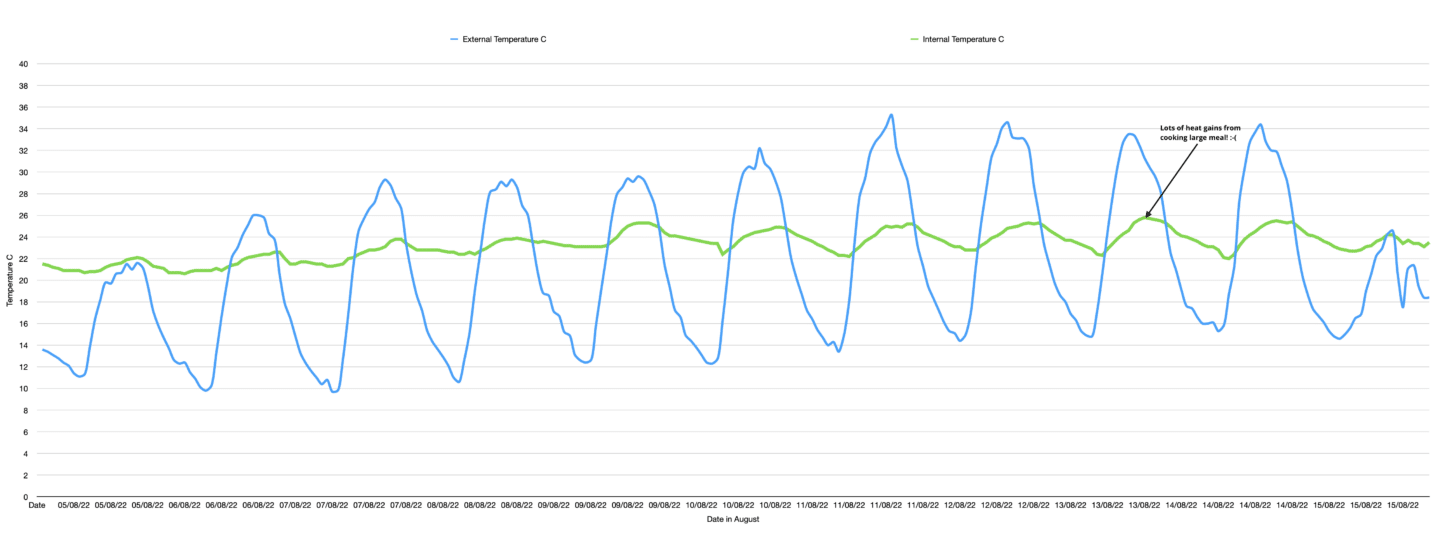SPECIFICATION GENERATOR
Find out which low impact materials are right for your building project.
Natural Materials and Performance in a Heatwave
Last month we wrote an article about decrement delay and how it can help enormously with keeping buildings comfortable, particularly during heat waves such as the one we’ve recently experienced in the UK.
To further highlight and explain this we’ve collected the below data from a Passivhaus building which uses wood fibre insulation in the roof and walls, along with lots of clay boards lining the interior to boost thermal mass.

The graph above shows how the external temperatures vary by as much as 21C but internally the building is varying by around 3 degrees. This internal variation is more than the 1.5 – 2 degrees you’d usually expect but this is due to the combination of internal heat gains from cooking, etc. and the purge ventilation going on in the house to cool it overnight.
This building has no active cooling systems and relies on ventilation only and in spite of this maintained comfortable temperatures of between 22-25.5C even when the external temperatures were peaking at 35.5C. Whilst this is a Passivhaus and so should perform better than most, a lot of the benefit comes from the materials used in the construction, highlighted by other nearby highly insulated buildings that used lightweight insulation, suffering with overheating.
The addition of clay products to the interior of the building provides a relatively thin but high mass surface that can absorb and release heat slowly. It also does a very good job of buffering/lowering humidity which remains high inside when the external temperatures rise so high in heat waves. This helps improve thermal comfort as the higher the humidity, the harder it is to keep cool.
Clay products can also be used with active cooling systems to cool building surfaces, without issues with surface condensation because of their ability to absorb moisture. To expand our clay product range further we have recently introduced the Argillatherm Riviera heating and cooling system.
This system uses a high density, compressed clay/woodfibre panel, which is moulded to allow water carrying pipes to be laid into them. Once the pipework is installed, a layer of clay plaster is added to it to finish it. This gives high levels of radiant heat which, in well insulated buildings, would be enough to provide the main source of heat for the building. In less well insulated buildings it can provide localised areas of greater warmth and comfort.
If you’d like any other information on the above or have any questions, please contact us.
